Technical mastery in tennis and Padel is the cornerstone of these sports’ greatness. Beyond sheer athleticism or strategic prowess, the finesse of technique often distinguishes legendary players from mere contenders. From the smooth stroke of a tennis racquet to the precise placement of a padel shot, every moment on the court reflects years of practice and refinement. In this article, we delve into the history of tennis and Padel to dissect some of the best moves ever performed on the court. These moments encapsulate the pinnacle of tennis skill, which dazzled audiences and left an indelible mark on the sport. By analyzing the mechanics, strategy, and execution behind these moves, we aim to uncover the secrets of their success and understand what sets them apart.
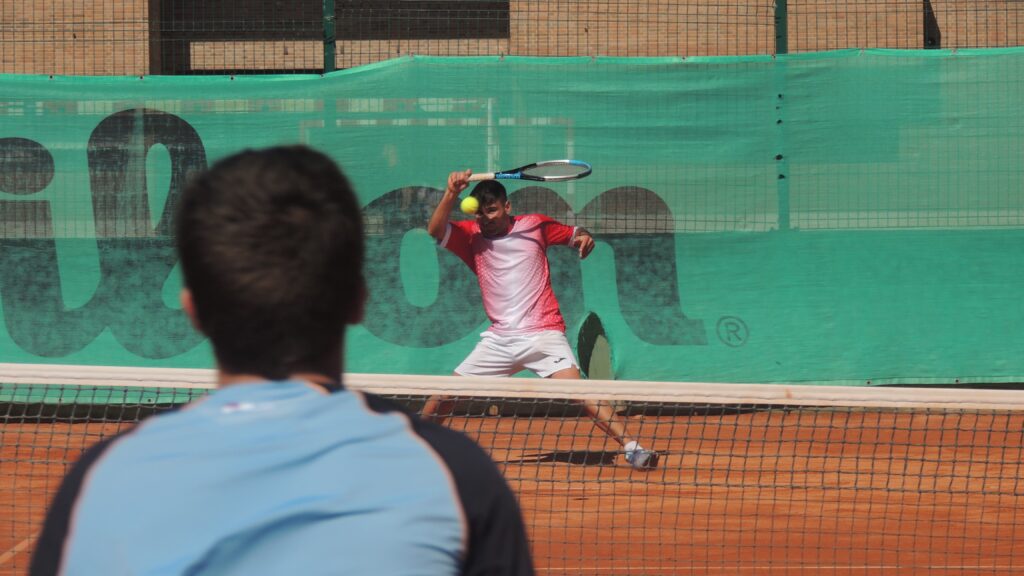
Iconic Tennis Moves
Roger Federer’s Forehand
Roger Federer, born August 8, 1981, in Basel, Switzerland, is one of tennis’s greatest players. Known for his elegant style and versatility. Federer’s fluid play, precise shots, and strategic brilliance have earned him admiration worldwide. Off the court, he’s respected for his sportsmanship and philanthropy through the Roger Federer Foundation, supporting education programs for children. Federer’s forehand is not just a stroke; it’s a symphony of precision, power, and finesse that has redefined modern tennis. With its fluidity, speed, and remarkable accuracy, Federer’s forehand is one of sports history’s most iconic and influential shots. At the core of Federer’s forehand prowess lies his impeccable technique. The Swiss maestro’s modified Eastern grip allows him to generate tremendous topspin while maintaining control and accuracy. As he prepares to strike the ball, Federer utilizes a compact backswing, positioning his racquet head slightly below the flight path. The key to Federer’s forehand lies in his exceptional footwork and balance. He effortlessly maneuvers into position with quick, precise steps, ensuring optimal timing and weight transfer. Federer’s body rotates seamlessly. He initiates the forward swing, transferring kinetic energy from his legs and torso into the racquet head. What sets Federer’s forehand apart is its combination of speed and precision. Despite its fluid motion, the shot packs a punch, generating blistering racquet head speed that propels the ball with remarkable velocity. Yet, amidst the power, Federer maintains pinpoint accuracy, consistently finding the corners of the court with surgical precision. The spin imparted by Federer’s forehand is impressive. By brushing up on the back of the ball at contact, he generates a vicious topspin that not only helps control the trajectory of the shot but also allows it to dip sharply as it crosses the net. The spin, coupled with his ability to vary the depth and angle of his shots, keeps opponents constantly off balance and unable to anticipate his next move. Federer’s forehand has had a profound impact on the evolution of modern tennis. Its power, precision, and versatility have set a new standard for excellence, inspiring a generation of players to emulate his technique. Roger’s willingness to innovate and adapt his game over the years has allowed him to maintain a competitive edge against younger, more athletic opponents. Federer’s forehand is a testament to the artistry and technical mastery defining tennis’s greatest players. With its fluid mechanics, lightning-fast speed, and unwavering precision, the Swiss maestro’s signature shot has left a mark on the sport, forever changing how it is played.
Serena Williams Serve
Serena Williams, born September 26, 1981, is an iconic figure in tennis history. She has dominated the sport for over two decades and has won 23 Grand Slam singles titles, making her one of the most successful players in history. Her serve is a weapon unlike any other in the history of women’s tennis. With a lightning-fast arm action and explosive leg drive, she generates tremendous racquet head speed, propelling the ball towards her opponent at speeds that regularly exceed 120 miles per hour. It allows Williams to gain control of the point from the first shot. Williams’s serve mechanics are a study of efficiency and precision. From her stance to her ball toss to her follow-through, every aspect of her motion is carefully calibrated to maximize power and accuracy. She utilizes a pinpoint stance, with her feet close together and her weight evenly distributed, allowing for quick weight transfer and explosive energy transfer from her legs to her racquet. Williams’s ball toss is another crucial element of her serve technique. With a high and consistent toss, she ensures optimal contact point and timing, allowing her to strike the ball at the peak of its trajectory with maximum force. Her fluid arm motion and full extension at contact further amplify the power of her serve, creating a formidable combination of speed and accuracy. What truly sets Serena’s serve apart is its versatility. While her flat serve is her primary weapon, capable of blowing past opponents with sheer [ace, she also possesses a devastating kick serve and slice serve that adds complexity to her game. Her kick serve, in particular, jumps high off the court, making it difficult for opponents to attack and allowing her to dominate play from the outset. Williams’s ability to disguise her serves and vary their placement keeps her opponents guessing and off balance. Whether aiming for the corners, body, or T-serve, Serena consistently finds her spots with uncanny precision, exploiting her opponent’s weaknesses and maintaining the upper hand in crucial moments. Serena Williams’s serve is a masterpiece of power, precision, and variation. With its speed, pinpoint accuracy, and deceptive variations, Serena’sher serve has been the cornerstone of her success and a defining feature of her legacy as one of the greatest players in sports history.
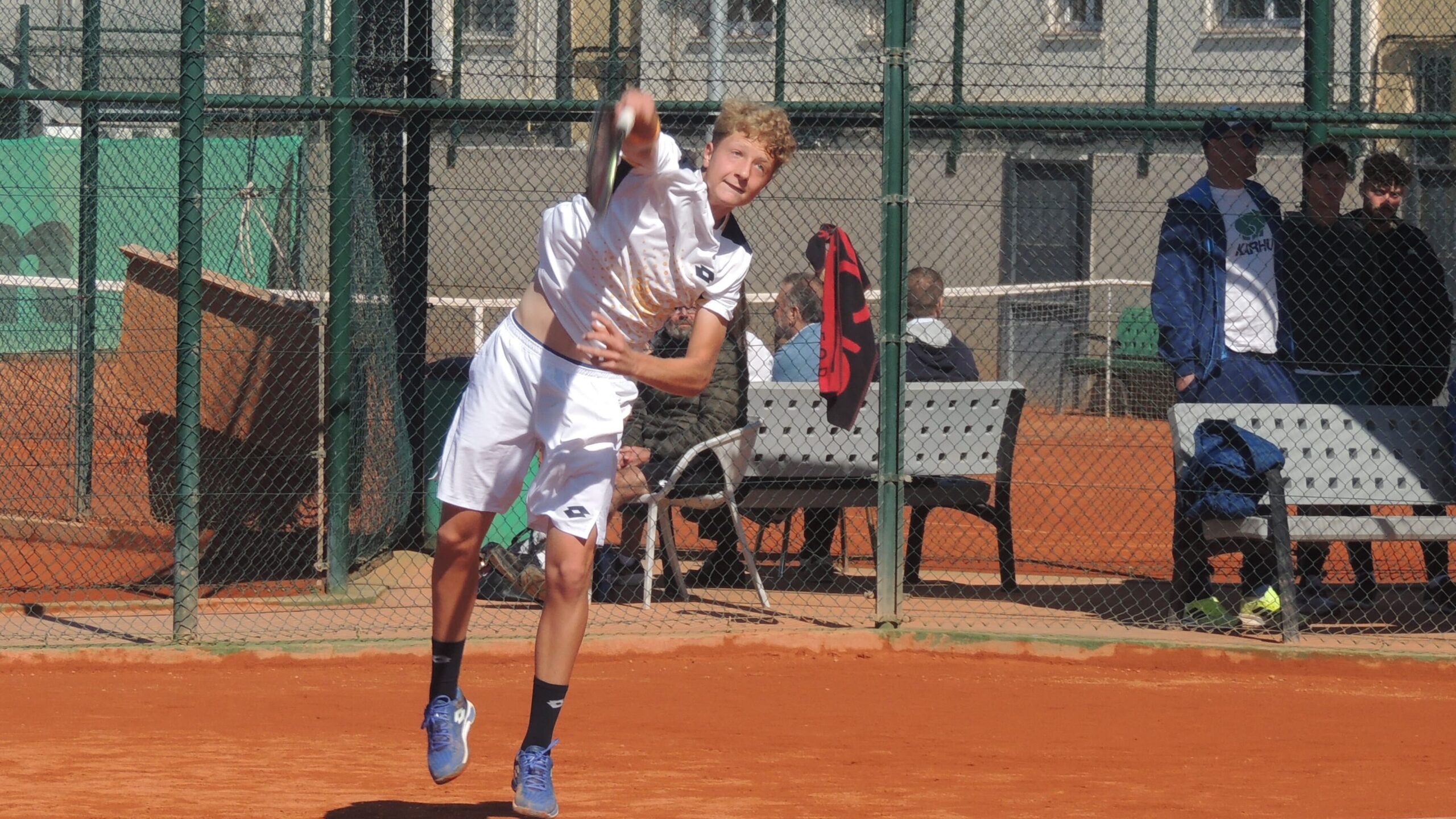
Rafael Nadal’s Topspin Forehand
Rafael Nadal is one of the greatest tennis players in the world of all time. He was born in Spain on June 3, 1986, in Manacor in Mallorca. Nadal started his tennis career at age 4 under the guidance of his uncle, Toni Nadal. Since then, he has won 92 ATP-level single titles, including 36 Masters titles and an Olympic gold medal, with 63 on clay courts. Nadal has left an indelible mark on the sport with his incredible athleticism, tenacity, and greatest clay-court success. The biomechanics behind Nadal’s topspin forehand illustrate his technical prowess and explain why it is such a potent weapon, especially on the slower clay surface. Rafael Nadal’s topspin forehand fundamentals are his distinct grip and swing plane. Using a Western grip, Nadal brushes up on the rear of the ball at contact to produce tremendous topspin. This grip produces a steep angle of attack, which causes the ball to dip abruptly and bounce high as it lands, along with his trademark buggy-whip swing. Nadal’s topspin forehand is made even more potent by his swing mechanics. By utilizing a complete loop backswing and a strong windshield wiper motion, he optimizes the length of his swing path, producing the highest possible racket head speed. Nadal’s rotational power, produced by his legs and core, gives the shot more momentum as he rushes through the contact zone, enhancing its velocity and spin potential. The effectiveness of Nadal’s topspin forehand is accentuated on clay courts due to the specific qualities of the surface. Since clay courts are naturally slower than other types of surfaces, the ball can bounce higher with more spin. These qualities are best utilized by Nadal’s topspin forehand, which produces such severe spin that the ball kicks up violently upon landing and frequently rises above his opponent’s strike zone. Also, Nadal’s forehand’s strong topspin makes it difficult for his opponents to time and place their shots. Opponents are forced to hit shots above shoulder height when the ball’s high bounce reduces their control and power. Because of the disruption to their rhythm, Nadal can control the action from the baseline and consistently and intensely grind down opponents. Nadal can defend well on clay because of his topspin forehand, which he can use to convert defense into attack with a single explosive stroke. He exerts tremendous pressure on opponents by retrieving balls that look impossible and counterpunching with fierce topspin forehands, frequently forcing errors or creating opportunities to take control of the game.
Novak Djokovic’s Return of Serve
Raised in Belgrade, Serbia, on May 22, 1987, Novak Djokovic is among the most talented tennis players of his time. Throughout his career, Djokovic,” renowned for his extraordinary athleticism, mental fortitude, and all-around skill,” has racked up many accomplishments. Djokovic has solidified his status as one of the sport’s all-time greats with 20 Grand Slam singles victories, including a record-tying nine Australian Open crowns. In the tennis community, he is highly regarded for his ability to execute under duress and his unwavering pursuit of excellence. In addition to being a defensive move, Novak Djokovic’s serve return is a masterstroke of strategy that frequently swings the balance in his favor. Djokovic has elevated the return game to an art form, renowned for his perfect timing, lightning-fast reflexes, and extraordinary ability to interpret his opponent’s serve. Djokovic regularly applies pressure to his opponents from the first stroke. The key to Djokovic’s comeback strategy is his extraordinary foresight. Thanks to his thorough scouting and acute court awareness, Djokovic has an instant advantage in reading his opponent’s serve patterns and tendencies. When faced with a powerful first serve or a perfectly placed kicker, Djokovic frequently positions himself early and is prepared to launch a counterattack. Djokovic’s return style also heavily relies on his lightning-fast reactions. Even against the fastest serves, he can make split-second modifications to his positioning and stroke technique thanks to his cat-like agility and razor-sharp responses. Djokovic can generate pace and direction on his returns, applying pressure to his opponents immediately, thanks to his ability to monitor the ball and contact it in the ideal strike zone. Djokovic’s ability to convert defense into offensive in the return game makes him stand out. Djokovic tries to control the point from the first stroke rather than just countering his opponent’s serve. He frequently does this by precisely rerouting the pace and angle of the incoming ball. Djokovic’s returns are intended to force his opponents to defend and take the initiative, whether he’s diving back a large serve with precise placement or charging a second serve. Furthermore, Djokovic can easily switch from defense to offense with superb footwork and balance. He can move swiftly from a defensive posture to a dominant one inside the baseline. In addition to applying pressure, this aggressive mentality demoralizes Djokovic’s opponents as they try to retake the point against his unrelenting assault.

Legendary Padel Moves
Juan Martin Diaz’s ‘Vibora’
Juan Martin DiaViboraora’ is one of the most famous and potent shots in the history of Padel. As a master of strategy and technique, Diaz refined Viboraora” to become a formidable weapon that could quickly change the course of any match. Let’s examine the nuances of this storied stroke and its tactical importance in the Padel game. The ‘Vibora’ is an overhead shot with a strong spin that Diaz hits accurately. He positions himself behind the service line and delivers a powerful yet fluid stroke that creates a topspin that tampers with the ball’s flight and presents challenges for opponents. The ‘Vibora’s’ strategic value resides in its ability to control the point and exert pressure on opponents. The “Vibora” is a common counterattack tactic used by Diaz to counter lobs and defensive shots from his opponents. Diaz counters his opponent’s defensive plan and pushes them into a defensive stance by charging into the court and grabbing the ball as it rises. Furthermore, opponents find it difficult to accurately predict the ball’s trajectory because of the high spin on the “Vibora.” This unpredictability frequently results in poor returns or defensive blunders, allowing Diaz to seize the initiative and win the point. In addition, the ‘Vibora’ can be tactically employed to break through the opponent’s defense. Diaz can stretch his opponents laterally and create room for a game-winning shot down the line or a well-placed volley into the open court by guiding the shot toward the corners or sidelines.
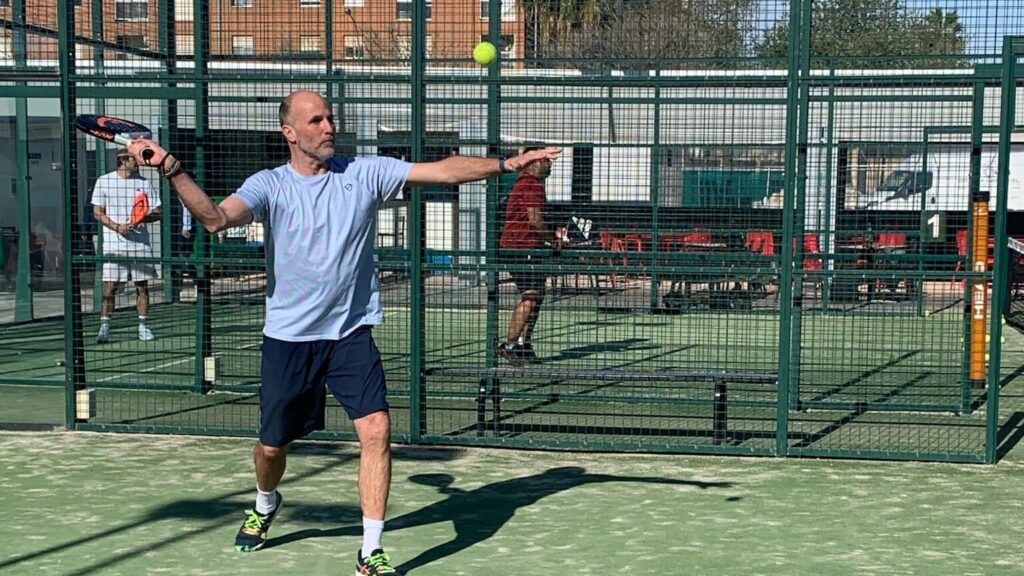
Fernando Belasteguin’s Backhand
On the padel court, Fernando Belasteguin is admired for his exquisite backhand, which is known for its accuracy, control, and capacity to control play. Let us examine the subtleties of Belasteguin’s backhand stroke and see why it is one of his most powerful tools. Belasteguin is known for his flawless timing and elegant, flowing backhand stroke. He produces remarkable power and control with a compact swing and a continental grip, enabling him to position the ball accurately. He positions himself early and modifies his stance to provide ideal balance and weight transfer; thus, his footwork is equally important. His backhand is unique because of its superb placement and control. Belasteguin constantly finds his areas with surgical precision, taking advantage of the smallest gaps in his opponent’s defense, whether he’s executing a drive, slice, or lob. Because he can alter the direction and speed of his backhand, opponents are forced to stay on the defensive and estimate what he will do next, which keeps them wondering. Belasteguin uses his backhand to create openings and winning situations in a calculated manner. His strokes change in height, depth, and angle, which throws opponents off balance and makes them uncomfortable. His ability to locate acute angles and hit winners from seemingly impossible locations puts opponents under tremendous strain, frequently resulting in mistakes or poor returns.
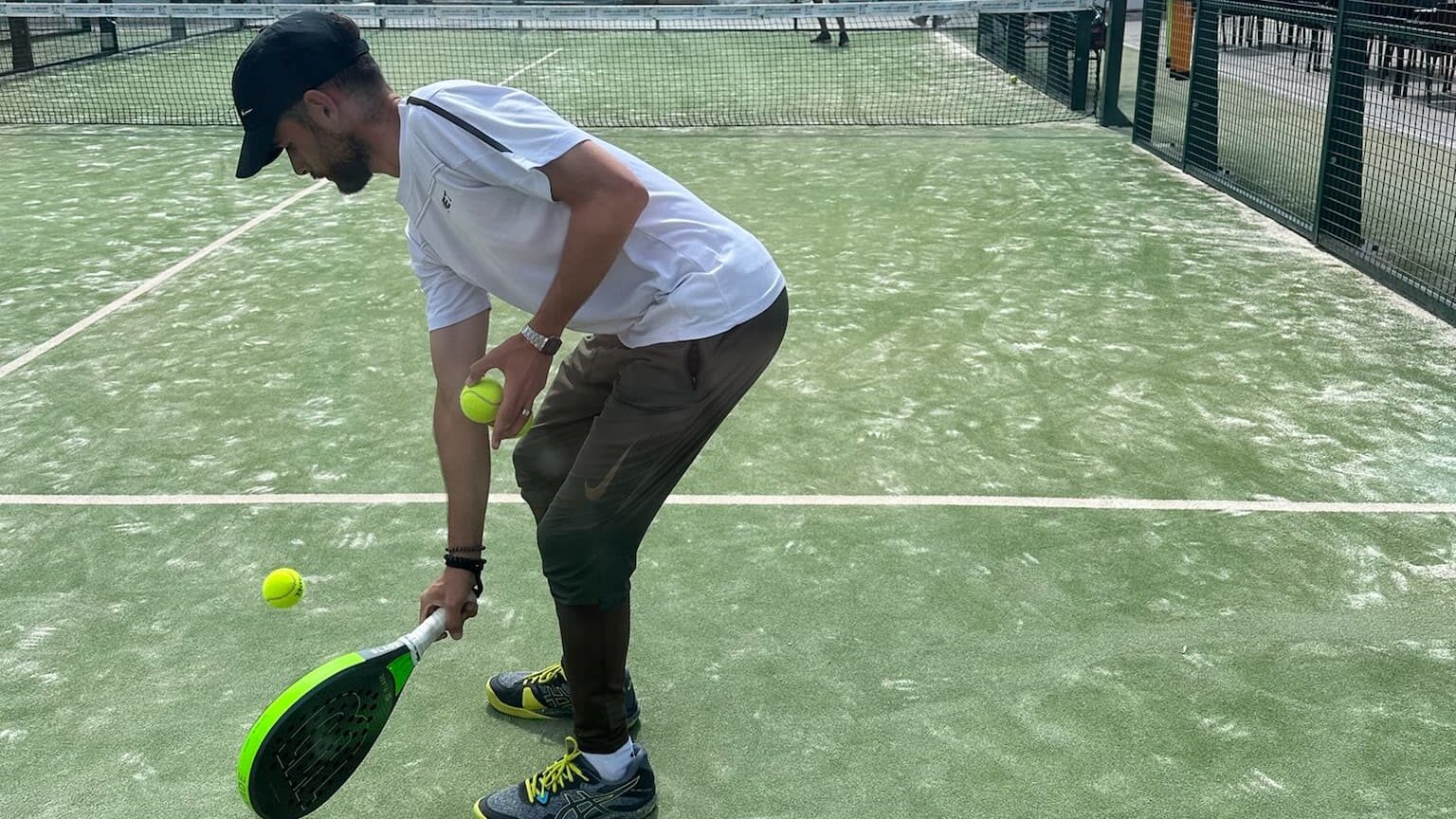
Paquito Navarro’s ‘Bajada de Pared’
The “Bajada de Pared,” Paquito Navarro’s trademark padel shot, is renowned for its intricacy and potency in converting losing circumstances into winning ones. Let’s examine the technical details of this great shot and how Navarro uses it to take the lead. When Navarro finds himself in a defensive position close to the court’s back wall, he executes the “Bajada de Pared,” also known as the “Wall Drop.” When an opponent attempts an offensive shot, Navarro reacts fast to predict the ball’s path and positions himself to catch it as it bounces off the back wall. Navarro utilizes his paddle to angle the ball downward toward the opponent’s feet, only inches above the court surface, with lightning-fast reflexes and perfect timing. The shot’s placement and accuracy are crucial since Navarro wants the ball to bounce near the opponent’s body and low, making it difficult for them to return successfully. Navarro’s ‘Bajada de Pared’ stands out because of its intricacy and potency in salvaging points from hopeless situations. Navarro uses his opponent’s offensive shot as a chance to take back the point by using the rebound off the back wall. Opponents find handling the shot’s low, sliding trajectory difficult, frequently leading to poor returns or clear victories. To gain control of the point and change the momentum in his favor, Navarro strategically uses the “Bajada de Pared.” Navarro’s ability to execute the “Bajada de Pared” with regularity and precision makes it a crucial weapon in his arsenal, whether defending against huge smashes under duress or setting up offensive opportunities from the back of the court. Impact on the Game.
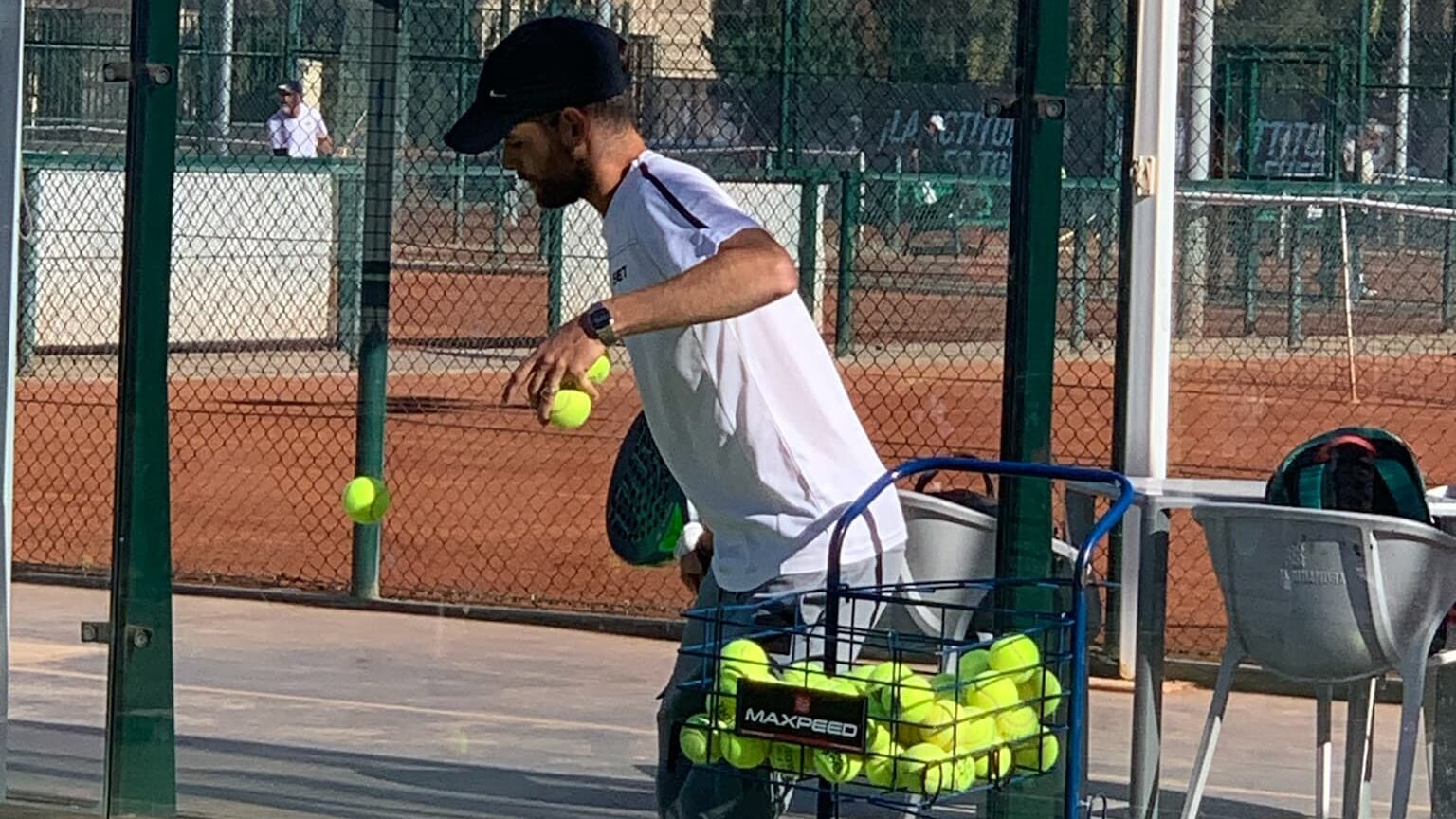
Evolution of Techniques
Technological Advancements
Technological and scientific advancements in sports science and equipment have largely refined padel and tennis trademark motions. For instance, in tennis, racket technology has advanced to give players more power, control, and spin potential, enabling them to execute characteristic strokes like Rafael Nadal’s topspin forehand and Roger Federer’s forehand with even more accuracy and potency. Similarly, advancements in string technology have produced more spin generation and better feel, allowing players to add spin to plays like Williams’ serve and Djokovic’s return of serve. Furthermore, advancements in sports science have given athletes a better grasp of nutrition, physical fitness, and biomechanics, enabling them to maximize their training regimens and improve their on-court performance. Adaptation by New Generations. Younger players have modified and evolved classic Padel and tennis movements to stay ahead of the game, adding their unique styles and inventions. For instance, younger tennis players have expanded on the groundwork established by greats like Federer, Nadal, and Djokovic by creating distinctive takes on famous shots and adding fresh approaches to the game. Comparably, young padel players have added their twist to moves like Navarro’s “Bajada de Pared,” experimenting with various grip types, swing patterns, and shot choices to develop distinctive maneuvers and styles of play. Signature moves in tennis and Padel have evolved, reflecting how sports are dynamic and influenced by new players’ generational creativity and technical improvements. Signature strokes like Federer’s forehand, Nadal’s topspin forehand, Djokovic’s serve return, Williams’s serve, and Navarro’s “Bajada de Pared” are being developed and optimized to ever-higher levels of accuracy and potency as equipment and sports science continue to progress. As this goes on, up-and-coming players build on the foundations set by the greats, customizing and modifying these classic plays to fit their game-changing approaches and styles. This encourages innovation and pushes the limits of the sport. In the end, the development of tennis and padel skills is evidence of the perseverance of the competitive spirit and the unwavering quest for sports brilliance.